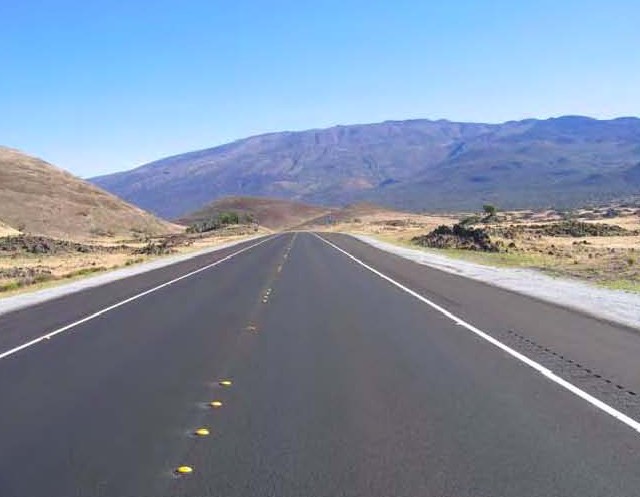ANALYSIS: Three Projects Critical to the Big Island Economy
In his State of the State address Tuesday, Gov. Neil Abercrombie stressed the importance of continued infrastructure improvements in Hawaii, noting that thanks to Hawaii’s good credit rating, such projects can be now be undertaken at “historically low interest rates.”
The governor’s remarks follow a multitude of project-funding requests made by Mayor Billy Kenoi at the Hawaii Legislature last week. With state tax revenues continuing to recover from their recession-era lows, we take a minute to highlight three projects critical to the long-term growth of the Hawaii Island economy.
Expansion of the Kona International Airport
It’s tough to overstate the importance of airline arrivals when discussing Hawaii Island’s economy.
Abercrombie has already requested $113 million in improvements for Kona’s airport, including a $37.5 million international arrivals building and $70 million for expanding terminals.
Hawaiian Airlines recently attempted to secure authorization for a direct Kona-to-Haneda flight for the Big Island. Although it was ultimately rejected by the US Department of Transportation in favor of a Seattle-Haneda route by Delta Airlines, the potential benefits of the new direct service were huge.
Analysts projected that direct service to Kona would have added $74 million annually to Hawaii’s economy, created 1,400 jobs (largely on Hawaii Island) and boosted the US economy as a whole by $135 million.
Factor into that a direct vein for Hawaii’s agricultural products (including seafood and grass-fed beef) to be flown straight to Japan daily, and it’s obvious that the impact of a single international flight can be staggering.
Although negotiating direct routes is an uncertain game involving both business and politics, the need for expanded air access to the Big Island will be critical in the future. As the Asian tourism market continues to grow, and Hawaii legislative representatives continue to fight for easy access to the islands for Chinese visitors, now is the time to prepare Kona for the tourism of the 21st century.
Completion of the New Saddle Road
Attempts for a quick commute between Hilo and Kona date all the way back to 1849, when prison labor was used to construct a crude stretch of road that was abandoned after a little over 10 miles of work.
The modern “Saddle Road” will likely soon be renamed the “Daniel K. Inouye Legacy Highway” after the late senator who consistently fought for its current transition toward a 50-mph cross-island shortcut.
Four phases were planned for the project, the third of which will likely be completed this year by connecting the new road to Mamalahoa Highway near the Waikoloa junction. A final section stretching to the Queen Ka`ahumanu Highway is still unfunded, with it estimated to cost anywhere between $45-70 million.
Linking the more affordable and agriculturally focused east side of the island with the tourist-heavy, pricier west provides a multitude of long-term benefits (including quick commutes for residents seeking work on either side of the Big Island).
Traffic on the road is expected to triple in the next eight years alone, and the completion of the final phase is dependent partly on Hawaii’s new delegation to the US Senate. But even if newly minted Senators Brian Schatz and Mazie Hirono can’t muster up all the funds necessary, the state Legislature could attempt to make up any shortfall.
New University Construction Projects
Although student enrollment itself has finally peaked after its recession-induced highs, the University of Hawaii at Hilo is still a huge driver of the Big Island economy, creating up to $200 million in annual spending here, and providing a third of East Hawaii’s jobs.

The new College of Pharmacy project could bring untold millions to Hawaii Island. Image courtesy University of Hawaii.
One of the fastest growing programs at UH-Hilo is currently the new College of Pharmacy, generating over $50 million annually for Hawaii’s economy and drawing students from around the world.
According to Kenoi, Abercrombie’s support has been critical in pushing for $41 million over the next two years to finance a new building for the College of Pharmacy and Health Sciences. So far, it is the only new construction project for the university system to receive a nod of approval by the governor. The project will bring both short-term construction jobs and untold millions in long-term economic activity to the island.
Meanwhile, the continued funding and support of the new Palamanui Campus in West Hawaii will help to educate and train residents of Kona unable to make regular commutes to Hilo, and should help to both strengthen and diversify the tourist-heavy economy there.
Editor’s Note: We encourage you to submit your thoughts on what projects and priorities our state and federal lawmakers should be focused on to help foster continuing prosperity on Hawaii Island. Post your comments below, or write us: [email protected] (include your full name, even if requesting anonymity, town and clearly state your issue).















